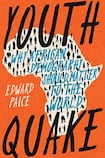
In 1980, one in 10 people on this earth were African; today, it is one in six. By 2050, the continent is expected to have 2.5 billion people – more than a quarter of the world’s total; by the end of the century that could reach 40 per cent.
Africa’s population growth has been in the news lately, after Britain’s Prince William was widely criticised for suggesting it is endangering wildlife – comments that sparked outrage among African environmentalists, who pointed out that their vast continent emits less than 4 per cent of global emissions.
Now, a new book by Edward Paice, a historian and director of the UK-based Africa Research Institute think tank, offers an in-depth look at Africa’s population data, while calling for a sense of humility in discussions around this topic.
Youthquake: Why African Demography Should Matter to the World is particularly concerned with urging caution against “overarching narratives incorporating population”, even as it details the undeniable challenges. Analysts and other commentators need to stop catastrophising about the effect of population growth on Africa, Paice argues. “Catastrophes – like miracles – are only ever discerned after the event,” he writes. “The point is not to suggest, Pollyanna-like, that everything about the future is rosy . . . [but] the bleakest prophecies for Africa by expert outsiders from the 1970s onwards have all proved wayward.”
The book is critical of “crisis narratives” and the use of words like “bomb” or “explosion” to describe population increases. It also advocates for each African country to be regarded separately, as they deal with bespoke challenges – “some severe, some manageable”.
'Dangerous oversight'
Still, it is clear that the continent as a whole can be no longer be left out of global conversations. “The centrality of Africa in global affairs in the 21st century is now certain,” Paice writes, and ignoring it is “a foolish and even dangerous oversight”.
Today, there are more Africans aged under 15 than the combined populations of the United States and Mexico. In comparison, as its population drops, Europe could go from making up 20 per cent of people on Earth in 1950 to only 7 per cent in 2050.
Paice urges perspective. He points out that the African continent used to have a significantly low population for its vast size, and it still has a density of 44 people per square kilometre, compared with the global average of 59. Rwanda has its highest population density, at 512 people per square kilometres – much lower than Bangladesh, which has 1,291.
This book details historical debates around demography, tying together the first World Population Conference; the role of the United Nations; the tension between African countries and the West regarding post-colonialism and sovereignty; and the US “global gag rule”, where the US government pulls funding from foreign organisations that provide abortion services, referrals, or advocate for abortion law reform. It also touches on youth protests; female education; the pressure African governments come under to secure donor funding; and decades of involvement by the World Bank, which has deemed fast population growth in Sub-Saharan Africa “neither desirable nor necessary”.
Paice delves into problems that may be exacerbated by population increases, from the obvious to the extreme. Unemployment can be a clear consequence. In Nigeria, Africa’s most populous state, the unemployed total surpasses that of all EU member states combined. About 800,000 Ugandans will reach working age every year in the 2020s, while, Paice writes, the number of decent, waged job opportunities available there is estimated at about 75,000. The median monthly pay for the lucky minority who get those jobs is $50.
Yet Paice urges caution again when examining whether there is a link between increases in population and the likelihood of conflict. The Rwandan genocide is only mentioned briefly here but is sometimes said to have been partially fuelled by competition over land, exacerbated by the country's ever-increasing number of people. (jstor.org/stable/44319226)
Whether population growth causes discontent will be a matter for politics, Paice argues. Development cannot happen alone, though development agencies, donors, global charities, international finance institutions, foreign economists and investment advisers tend to treat it as separate to politics or ignore politics altogether. Poverty can be political and governments can be strategically anti-development, or leave certain areas and regions undeveloped on purpose – which generally correlates with women having more children.
Some African leaders have argued that a bigger population will give them more sway globally. In Tanzania, the now deceased president John Magufuli banned family planning adverts, calling on the country’s women to “set your ovaries free” and saying “women can now throw away their contraceptives”.
Despite those inclusions, this is certainly not a character-driven text. As often happens with data regarding large groups of people, it feels like some of the humanity is lost – the reminders that each piece of each number is a unique individual with their own stream of consciousness.













